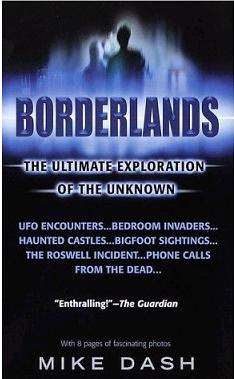Mummies appear in Edgar Allan Poe’s short story, “Some Words with a Mummy” (1845); in several horror novels, including Anne Rice’s The Mummy, or Ramses the Dead (1991) and Douglas Preston and Lincoln Child’s Book of the Dead (2007); in such movies as The Mummy (1932), The Mummy’s Hand (1949), The Mummy’s Tomb (1942), The Mummy’s Ghost (1944), The Curse of the Mummy’s Tomb (1964), The Mummy’s Shroud (1966), Blood from the Mummy’s Tomb (1971), The Mummy Lives (1993), The Mummy (1999), and The Mummy Returns (2001); and in episodes in television series, such as Buffy the Vampire Slayer’s “Inca Mummy Girl” and “Life Serial.”
Mummies--preserved corpses from whom internal organs have been removed and preserved in jars--have been found in many countries, including Chile, China, Egypt, India, and Italy (Sicily and Vatican City), Pakistan, Persia, Peru, and Russia.
When most people think of mummies (which we do all the time, right?), they tend to think of Egyptian mummies. The corpses of important people, usually pharaohs, were deliberately mummified by the ancient Egyptians so as to ensure that the resurrected ka (personality) and ba (life force) had a home in which to live. Were the body not preserved, these vital aspects of the deceased’s soul would be homeless vagrants, doomed to wander the earth.
To mummify a mummy, the internal organs, except for the heart, were removed and stored in canopic jars, or carved and painted funerary urns. These jars were made in the images of four of the Egyptians’ gods, each of whom, it was believed, guarded the organ that the jar in its likeness contained. The man-headed Imsety guarded the liver, the baboon-headed Hapi protected the lungs, the jackal-headed Duamutef looked after the stomach, and the falcon-headed Qebehsenuef watched over the intestines. The heart was left inside the body because it was believed to be the repository of the soul. The brain was relatively unimportant (by ancient Egyptians’ standards), for it was believed only to be the organ that supplied mucus. Therefore, it was smashed and extracted through the nostrils using a hook.
To preserve the body, salts were used to dry and preserve the corpse’s flesh and tissues, and the remains were covered in natron to assist in the dehydration and preservation. The body was then wrapped in linen strips to further protect it, and amulets were provided to ward off threats and other evils. As a finishing touch, the mummy was equipped with false eyes. The tomb was furnished and decorated, and the mouth was opened so that the resurrected body could eat and speak. The mummy was then laid to rest inside a sarcophagus within the burial chamber of its pyramid. The walls of the tomb were inscribed with incantations from the Book of the Dead that the resurrected mummy could chant to gain access to the upper world.
Mummies became merchandise. Ground into powder, they were sold as medicines, paints, and even fertilizer. Mark Twain claimed that mummies were also used as locomotive fuel, although this contention has never been substantiated. The linen in which mummies were wrapped may have been used, during the American Civil War, as a source for paper.
Often, mummies are associated with curses. These curses were often plot vehicles for horror movies. When a grave robber broke into a pyramid to steal a mummy or the jewels with which such corpses were often buried so that the resurrected pharaoh would have a little spending money in the afterlife, the curse was activated, causing much suffering, death, and destruction.
“Everyday Horrors: Mummies” is part of a series of “everyday horrors” that will be featured on Chillers and Thrillers: The Fiction of Fear. These “everyday horrors” continue, in many cases, to appear in horror fiction, literary, cinematographic, and otherwise.











